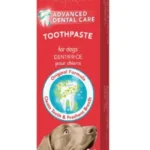As dedicated dog owners, we want the best for our furry companions. We strive to provide them a happy, healthy, and fulfilling life. One of the most crucial aspects of their well-being is nutrition. Like humans, dogs require a balanced diet to thrive and maintain optimal health. But do you know the right nutrition balance for your dog?
This blog post will delve into the secret behind achieving optimal nutrition balance for your dog. You will understand their dietary requirements and know how to select the right ingredients. We will also explore different feeding methods and guide you through every step of this nutritional journey. So, let’s embark on this adventure together and unlock the key to keeping your four-legged friend in top shape!
Understanding Your Dog’s Dietary Requirements
Before we dive into the specifics of the right nutrition balance for your dog, it’s crucial to understand their dietary requirements. Dogs are primarily carnivores but have evolved as omnivores over time due to their association with humans. While they still require high-quality animal protein as a foundation in their diet, they can also benefit from certain plant-based foods.
Protein: The Building Block of Canine Nutrition
Protein plays a vital role in your dog’s overall health and well-being. It is essential for muscle development, tissue repair, and immune system function. High-quality animal protein sources such as chicken, beef, fish, and eggs should form a significant portion of your dog’s diet.
Carbohydrates: Providing Energy and Fiber
Carbohydrates are an important source of energy for dogs and can be obtained from various grains and vegetables. While some dogs may have specific dietary sensitivities or allergies to certain carbohydrates (such as grains), complex carbohydrates like sweet potatoes or brown rice can be included in moderation.
Healthy Fats: Essential for Vitality
Just like humans, dogs require healthy fats in their diet. Fats provide a concentrated source of energy and help support healthy skin, coat, and brain function. Incorporating sources of omega-3 fatty acids, such as fish oil or flaxseed, can contribute to your dog’s overall well-being.
Vitamins and Minerals: The Missing Puzzle Pieces
Vitamins and minerals are essential for various bodily functions, including proper growth, immune support, and bone health. While these micronutrients are present in the ingredients you choose for your dog’s meals, ensuring they receive a well-balanced diet that meets their specific needs is essential.
By understanding these fundamental dietary requirements, you can decide what goes into your pup’s bowl. But how do you strike the right balance between different nutrients? Let’s explore further in the next section.
Selecting the Right Ingredients
Quality should always be a top priority when selecting the right ingredients for the right nutrition balance for your dog. Just like we opt for wholesome foods to nourish our bodies, our dogs deserve the same level of care regarding their nutrition. Here are some key factors to consider when choosing ingredients:
Animal Protein: The Foundation of a Nutritious Meal
As mentioned earlier, animal protein is crucial for your dog’s health. Look for high-quality protein sources that are free from additives or fillers. Fresh meat or meat meal (such as chicken meal) can provide the necessary amino acids that support muscle development and overall vitality.
Wholesome Vegetables: Adding Nutritional Value
Vegetables can offer a range of vitamins and minerals while adding texture and flavor to your dog’s meals. Carrots, peas, spinach, and pumpkin are excellent choices that contribute fiber and antioxidants to their diet.
Healthy Grains: To Include or Not?
Including grains in your dog’s diet continues to be a topic of debate. While some dogs thrive on grain-free diets, others may benefit from whole grains such as brown rice or quinoa. It’s essential to consider your dog’s specific dietary needs and consult with a veterinarian if you have concerns.
Natural Supplements: Filling the Nutritional Gaps
In certain cases, natural supplements can help fill any nutritional gaps in your dog’s diet. Omega-3 fatty acids, glucosamine, or probiotics are supplements that can support joint health, coat condition, and digestion.
You can provide your furry friend with a well-rounded and nutritious diet by carefully selecting high-quality ingredients and ensuring a balance between animal protein, vegetables, grains (if appropriate), and necessary supplements.
Stay tuned for the next sections of this blog post as we explore different feeding methods and additional tips to optimize your dog’s nutrition for lifelong health and happiness. We’re just scratching the surface of unlocking the secret to optimal nutrition balance for your beloved dog!
How Do I Make My Dog a Balanced Meal?
If you consider making your dog a balanced diet from home, discussing it with your veterinarian or animal nutritionist is a good start. These professionals will be able to provide you with pure, balance dog food reviews.
The American College of Veterinary Nutrition (ACVN) states that your dog’s nutrition balance depends on age, health, size, and breed. You must also understand the basics of a dog’s balanced diet to discuss your options with an expert.
Making a balanced diet for your dog can seem daunting. But with some planning and preparation, it can be a straightforward process. Here are some tips to help you make a balanced diet for your dog:
1. Choose High-Quality Ingredients
High-quality ingredients are appropriate for your dog’s needs. Good sources of proteins include lean meats, fish, and poultry. Fats can come from sources such as fish oil or coconut oil. Carbohydrates can come from fruits, vegetables, and grains like brown rice or quinoa.
2. Use the Correct Proportions
A balanced diet for dogs should include the right proportions of proteins, fats, carbohydrates, and essential vitamins and minerals. You can source recipes online to create a customized diet for your dog.
Prepare the food in small batches to ensure freshness and avoid spoilage. Use clean, sterile utensils and cookware to prevent contamination.
3. Monitor Your Dog
Monitor your dog’s weight and overall health regularly to ensure the diet meets its nutritional needs. Adjust the diet based on your dog’s response and consultation with a certified animal nutritionist.
Provide plenty of fresh water at all times, and avoid feeding your dog table scraps or human food that can harm their health.
Remember, a balanced diet is just one aspect of your dog’s health and well-being. Regular exercise and proper veterinary care are also important for keeping your furry friend healthy and happy.
What Is the Best Source of Nutrition?
Choosing a source of nutrition from the hundreds of available formulas can be quite challenging. The nutrition industry is competitive, and most commercial foods have the right nutritional value. It is, therefore, important to understand the basics that make a balanced diet for dogs.
Here are the best sources of nutrition for dogs:
Protein
Proteins contain ten essential amino acids that dogs’ bodies can’t produce. The amino acids are necessary to create glucose, which transforms into energy. Other reasons why protein is an essential nutrient for dogs are that it:
- Supports the immune function
- Maintains a healthy coat
- Repairs tissues.
The best protein sources for dogs are animal-based ones such as Chicken and turkey, pork, fish and lamb. These sources are typically high in amino acids that dogs require for proper growth and development.
Plant-based protein sources such as soy or lentils are equally important but should be supplemented with additional amino acids as they need to provide a complete source of protein on their own.
Carbohydrates
Carbohydrates provide dogs with energy and also play a role in maintaining healthy digestion. If you struggle to balance your dog’s gut, incorporating enough carbs into its diet is the answer.
The best sources of carbohydrates for dogs include grains such as brown rice, quinoa, and oatmeal. Vegetables such as sweet potatoes, carrots, and green beans are also good sources of carbohydrates.
It is important to ensure that the carbohydrates sources are easily digestible and do not contain many sugars or fillers that can contribute to unhealthy weight and digestive issues.
Fats
Fats are an essential part of a dog’s diet and:
- Provide energy
- Help with nutrient absorption
- Support healthy skin and coat.
The best sources of fats for dogs are animal-based fats such as chicken fat or fish oil, as well as plant-based oils such as flaxseed or sunflower oil. It’s vital to ensure that the fat sources are of high quality and do not contain high amounts of saturated or trans fats, which can contribute to obesity.
Vitamins and Minerals
Like in the human diet, vitamins and minerals are essential for many bodily functions, including maintaining healthy bones, teeth, and muscles.
The best sources of minerals and vitamins for dogs are found in a well-balanced diet that includes a variety of foods. While commercial dog food contains added vitamins and minerals, it is important to ensure they are present in the correct proportions and not in excess.
Some natural sources of vitamins and minerals for dogs include liver, spinach, carrots, and broccoli.
Water
The purpose of water in a dog’s diet is to:
- Aid in digestion
- Supply nutrients to the body
- Aid in the absorption of nutrients.
Other important roles that water contributes to are regulating the dog’s body temperature and improving cognitive function.
What Are the 5 Main Ingredients?
Choosing high-quality dog food, whether commercial or homemade, is important. The food should meet the Association of American Feed Control Officials (AAFCO) standards, as these guarantee a certain level of nutritional quality.
To meet the nutrition balance for your dog, the food you opt for should contain five major ingredients. Among these ingredients should be:
Quality Organ Meat
As gross as it may sound, it’s perfect for dogs. Organ meats are rich in vitamins A, B1, B2, B12, and folic acid. This meat is a host of much-needed nutrients for your dog’s health.
Fruit
Well-meaning dog owners will ensure that the dog food they purchase is rich in fruit. The natural sugars present in fruits act as anti-oxidants. It would be best to aim for dog foods with an adequate amount of fruit as an ingredient.
Root Vegetables
Root vegetables provide vitamins C and A, beta-carotene, potassium, and healthy fiber to your dog’s diet. A good example of root vegetables is carrots and arrowroots.
Superfoods
Chia seeds are the best superfoods to incorporate into a dog’s diet. Superfoods are completely non-allergenic, and they are also rich in proteins.
Healthy Oils
Not only do healthy oils boost kidney function, but they also improve the dog’s gut health. Fish, sunflower, and flaxseed oils are healthy oils ideal for a dog’s diet.
Understanding the Rules for Dog Food
The 25% Rule
Foods that follow the 25% rule contain at least 25% of the ingredients in the name, excluding the water used during processing. To qualify for the 25% rule, the food must include a descriptive term in the name.
The descriptive words used can be: “nuggets,” “formula,” or “dinner.” For example, if a dog food is named “Beef Formula for Dogs,” note that at least one-fourth of the food comes from beef. What’s in a dog’s name means a lot. Manufacturers with a minimum of 25% of the primary ingredient add the descriptive word “dinner” on the product name.
Additionally, if there is more than one ingredient in the product, all those ingredients together should add up to 25% minimum of the total product. Each ingredient should total at least 3% of the entire product. Other variations like the “Nuggets” can have more than the 25% minimum of the total ingredients listed in the product’s name.
The 95% Rule
Unlike the 25% rule, the 95% rule in dog food indicates that the ingredients listed in the name make up 95% of the entire product. If a product name has two ingredients, like rice and beef, the two ingredients make up 95% of the dog food.
If the product has one ingredient, let’s say salmon, then the product will have to be 100% salmon. But if the packaging has indicated 95%, then the product is 95% salmon.
With the 95% rule, the remaining 5% is for other ingredients necessary for nutritional purposes. They may include minerals, vitamins, and tiny amounts of other ingredients.
The 100% Rule
Knowing the dog food rules guides you on how to balance a dog’s diet. Pet food processors can name the food 100% of a certain ingredient. For example, “100% beef” or “100% beef and chicken”.
The food can only complete the 100% rule if it contains only one or two ingredients. AAFCO permits manufacturers to name the food as such only when it meets the set standards.
Other products allowed in this formulation are trace amounts of preservatives and the water used during processing. Mostly, the only dog products that meet the 100% in the market are treats. Such products are rare because the rule of thumb is that a balanced diet for dogs should contain more than two ingredients.
How to Check Nutrients When Shopping
Understanding the nutritional facts and details listed on your dog food is vital. Looking at the package and beyond will let you know if your dog is getting the best nutrition balance.
The first step is to read the product package. This includes everything from the product name, the ingredients, and any other analysis on the package. Make sure you understand everything you’ve read. This is easier said than done. If you come across any misleading information, consult your vet.
Commercial dog food comes in dry and wet forms and is formulated to meet the specific nutritional needs of dogs. These are some of the standards that dog food must meet:
- The ingredients should be well-sourced and cooked perfectly.
- Wet dog food should be made with obsessively sourced meat to provide dogs with the required moisture.
- Dry dog food should be rich in nutrients like high meat and low-carb content.
- Chewable supplements and treats should contain traceable ingredients ideal for your dog’s well-being.
Beyond just reading the contents of the dog food bag, you should consider the following:
Research the Dog food: With so many brands in the market, choose a strict brand with safety regulations and protocols.
Familiarize with the Formulation Process: Learning how food is formulated is as important. You can consult a nutritionist or a vet.
Consider Quality Control: See if the brand is keen on quality control during manufacturing.
Look for Reviews: Other pet owners will likely leave positive reviews if the brand is good. Nutritionists can also come in handy in advising on pure balance dog food reviews.
How Many Meals Is Best for Dogs?
All dogs should eat at least two meals per day. That should be within 12 hours. A breakfast, lunch, and dinner schedule is an ideal option. As a dog parent, you’re likely to ponder how to feed your dog a balanced diet and how often.
How many meals you need to feed your canine companion depends on several factors, such as:
- Activity level
- Body weight
- Your dog’s breed
- Type of food
Activity Levels
Your dog’s agility habits determine how many meals it should feed daily. A very active dog should feed at least three times a day. A dog who spends most of the time in the house does not require as many calories as one that exercises a lot.
Body Weight
An underweight dog must feed more often to regain their body mass. Once they reach a healthy weight, you can alter their feeding schedule. Dogs with an ideal weight should feed at least twice a day.
Breed
Due to different metabolism rates, Some dog breeds require feeding more often than others. Breeds with a high metabolism need more calories and hence frequent feedings.
Food Type
You can feed your dog less frequently if dog food has high nutrients and calories. The type of food you give your dog determines its overall health. If you have a large breed of dog, you should feed them thrice a day if the type of food is wet. For dry food, you can administer five cups twice a day.
Have you been feeding your dog as you should? Hopefully, you now understand the right nutrition balance for your dog and can meet it.
Take Away
In conclusion, achieving a nutrition balance for your dog is an intricate yet rewarding process. It requires a comprehensive understanding of your furry friend’s dietary needs, careful selection of high-quality ingredients, and continual reassessment to ensure their ongoing health and happiness. With patience, dedication, and love, you can unlock the secret to optimal nutrition for your dog, supporting their lifelong vitality and well-being.





